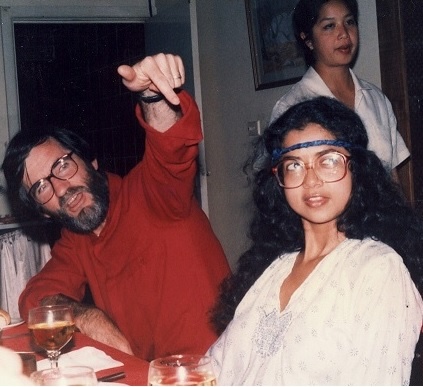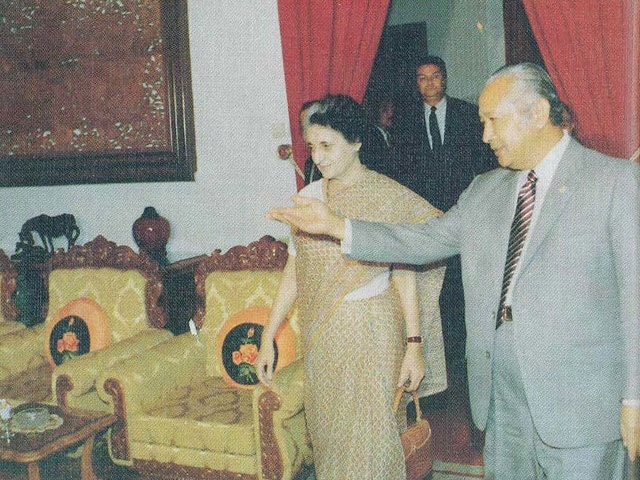Times change. Neighbours can now learn a lot from Indonesian democracy.
Krishna Sen
I came to Indonesia in 1978, having voted just once in an Indian national general election in 1977, one of the most fateful in the life of India’s democracy.
In June 1975, just as I reached voting age, the then Indian Prime Minister, Indira Gandhi, suspended Parliament, cancelled scheduled elections, and jailed more than a hundred thousand people, all in the name of an ‘Emergency’. Like every other Third World dictator, she held out the promise that authoritarian suppression of the noisy, fractious press would help end poverty in India. When she did allow the postponed elections to go ahead in March 1977, she and the Congress Party were comprehensively defeated. Media around the world lauded the Indian electorate and rang out with excited headlines about the courage of the people and the victory of democracy.
To someone who had grown to political adulthood in the brief period of authoritarian rule in India, the flexing of a people’s collective democratic muscle in the 1977 election was palpable and formative in fashioning a romantic view of electoral democracy.
But as I got ready for my PhD fieldwork in Indonesia, my supervisor Herb Feith pointed out (though perhaps not in quite these words) that my potential new Indonesian friends may not take kindly to an inexperienced foreigner with a deficit model of Indonesia’s democracy underpinning her interview questions.
My nearly three years of living in Jakarta in 1980-82 coincided with an unusual amount of diplomatic flurry between India and Indonesia. Suharto and Indira Gandhi each visited the other's country. But that hardly registered in the tiny bit of Indonesia which I inhabited. There, India seemed to be known only in three generalities: it had the world’s biggest film industry, its women still wore traditional gear, and it was democratic. But whenever comparisons between the two nations came up, conversations seemed to end in ‘tapi lain dong’ (something like ‘but we’re so different’).
Nor, to my knowledge, was there any scholarly interest in understanding Indonesia and India in comparative perspective during the three decades of the New Order.
Exemplar
Since the fall of Suharto, however, the global media has increasingly come to position Indonesia as an exemplar of multi-party, multi-cultural democracy in Asia, alongside India. In the last two decades, several academics, both Indonesian and foreign, have turned their attention to comparing the two democracies.
Coincidental synchronisation of the Indian and Indonesian national election cycles might have brought the ‘spectre of comparisons’ (to borrow Benedict Anderson’s phrase) to the foreground: both Jokowi in Indonesia and Modi in India started their first term in 2014 and won a second term in 2019.
Over the Joko/ Modi decade, international Democracy Indices have almost universally noted Indonesia’s ‘impressive democratic gains since … 1998’ (Freedom House, Indonesia Country Overview 2023), even though Indonesia’s actual score in the Freedom House annual reports has dropped each year since 2017 from a high of 65 to 58 in 2023. Small changes in scores notwithstanding, Indonesia has remained in the middle-category of the Freedom House index, labelled ‘partly free’, throughout the last two decades.
By contrast India moved dramatically down in 2021. Prior to that year and with the exception of just two annual reports during the so-called ‘Emergency’ (1975, 1976), India had been the only Asian nation consistently categorised as ‘free’ alongside western democracies such as Australia and the UK. In 2021 Freedom House dropped India to the ‘partly free’ category, where she has remained in the two subsequent reports.

Although the Freedom House Report continues to give Indonesia a slightly lower score than India, in other indices, such as the Bertelsmann Transformation Index, Indonesia is marginally ahead of India on a number of key criteria including political transformation towards democracy and governance. In 2021 the global media watchdog Reporters Without Borders listed India as one of the most dangerous places for journalists. As of 2018 there have been no journalists detained by authorities in Indonesia. In the same period the number of journalists behind bars in India has grown slowly from one in 2018 to seven this year. More broadly, mob violence against individual writers and media institutions is much less common in Indonesia today than in India. In 2021 PEN America listed India amongst the 10 countries with the highest number of writers in prison.
If Jokowi, particularly in his second term, has turned the tide of democratisation back a little, then Modi’s back-pedalling has been on steroids. While Jokowi cannot stand again, Modi can keep coming back as long as he can find a populist slogan that resonates with significant sections of the Hindu majority.
What, I wonder, would a 20-something Indian woman, who had grown up in Modi’s India, see if she came to Indonesia today? It might be quite irrelevant to her that a generation or two ago Indonesia held a million political prisoners. She might note only that there are none now, while in her country, a group of 16 political prisoners have been in jail without trial since 2018, almost forgotten by the media – there were two octogenarians amongst them, one of whom is now dead.
Indian deficits
The young woman from Modi’s India might find much to admire in what Indonesians have done to nurture a fragile and precious process of democratisation in her lifetime. She might know other deficits on the Indian side too: that almost half the women in rural India still cannot read and write, while in Indonesia most adults have at least rudimentary literacy; that despite the increasing political and social influence of religion in both countries, Jokowi’s Indonesia affords more protection to women and religious minorities than does Modi’s India.
In the world of the 25-year-old from Modi’s India, the lines between the Indonesian mainstream and the alternative media are blurred; there is no obvious state censorship to silence the cacophony of Indonesian voices and ideas. In her world, where information is over-abundant rather than overtly restricted, does a publication like Inside Indonesia still have a role to play?
In the 1980s, at a time when authoritarian rule seemed unassailable, Inside Indonesia was set up to find and publish pro-democracy voices from within Indonesian history, culture and politics. The aim was partly to scrutinise the New Order’s mechanisms for repressing these voices, but also to understand and underscore how pro-democracy forces survive, resist and recover. Whatever governments emerge from the 2024 elections in India and in Indonesia, the role of this magazine remains as a record of democracy and its discontents in Indonesia, a record from which neighbouring nations might have a lot to learn.
Krishna Sen (krishna.sen@uwa.edu.au) is emeritus professor in the social sciences at the University of Western Australia. She has published widely on Indonesia’s media.












